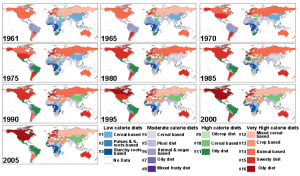At the recent UN Climate Summit in New York, global investors frustrated by the lack of policy progress on climate, issued a call to action through two initiatives: (1) 2014 Global Investor Statement on Climate Change, and (2) Montreal Carbon Pledge.
2014 Global Investor Statement on Climate Change
The 2014 Global Investor Statement on Climate Change has been signed by 354 investors with more than $24 trillion in assets, which represents an important contribution by the global investment community to support the UN Climate Summit and encourage strong domestic and international climate and clean energy policies. The statement sets out the steps that institutional investors (both asset owners and asset managers) can take to address climate change, and calls on governments to support a new global agreement on climate change by 2015 in addition to national and regional policy measures. By articulating their concerns, the signatory investors highlight the climate risk within the context of global investment:
“We are particularly concerned that gaps, weaknesses and delays in climate change and clean energy policies will increase the risks to our investments as a result of the physical impacts of climate change, and will increase the likelihood that more radical policy measures will be required to reduce greenhouse gas emissions. In turn, this could jeopardise the investments and retirement savings of millions of citizens.
There is a significant gap between the amount of capital that will be required to finance the transition to a low carbon and climate resilient economy and the amount currently being invested. For example, while current investments in clean energy alone are approximately $250 billion per year, the International Energy Agency has estimated that limiting the increase in global temperature to two degrees Celsius above pre-industrial levels requires average additional investments in clean energy of at least $1 trillion per year between now and 2050.
This Statement sets out the contribution that we as investors can make to increasing low carbon and climate resilient investments. It offers practical proposals on how our contribution may be accelerated and increased through appropriate government action.”
Now that policy makers have been called on to consider the recommendations in the 2014 Global Investor Statement on Climate Change, the investors are looking forward to a dialogue about the policy frameworks needed to catalyze investment in the clean energy, low carbon future.
Montreal Carbon Pledge
In another initiative, a number of the world’s largest institutional investors (representing more than US$75 trillion in investable assets) launched the Montreal Carbon Pledge at the annual conference of the UN-supported Principles for Responsible Investment (PRI) in Montreal. By signing the Montreal Carbon Pledge, investors commit to measure and publicly disclose the carbon footprint of their investment portfolios on an annual basis. Signatories will be accepted until September 2015. Overseen by PRI, the Montreal Carbon Pledge aims to attract US $3 trillion of portfolio commitment in time for the United Nations Climate Change Conference in December 2015. It also allows investors to formalize their commitment to the goals of a recently introduced Portfolio Decarbonization Coalition, co-founded by the United Nations Environment Programme Finance Initiative.
The Montreal Carbon Pledge represents an important first step to measuring and managing the long-term investment risks associated with climate change and carbon regulation. By measuring their carbon footprints, investors will be able to quantify the carbon content of their portfolios. A growing number of investors, including Etablissement du Régime Additionnel de la Fonction Publique (ERAFP), AP4, London Pensions Fund Authority (LPFA) and VicSuper, have already taken steps to measure the carbon footprint of their investments. 78% of the largest 500 publicly listed companies now report their carbon emissions. PRI will manage the online portal where investors can endorse the Montreal Carbon Pledge. In particular, the portal will enable investors to report the size of their portfolio carbon footprint commitment and any associated carbon reduction targets. Business leaders highlighted the importance for investor to understand their carbon risk in order to reduce their risk exposure:
“There is a perfect storm of reported carbon data, reliable portfolio carbon measurement tools and low carbon investment solutions. This makes it possible for investors to understand and act to reduce their carbon exposure like never before.” (Toby Heaps, CEO of Corporate Knights)
“It is hard to dispute that carbon is a risk, so how can we fulfil our duty of trust if we don’t implement the systems necessary to assess this risk in order to reduce it and, worse still, having measured the risk, we don’t disclose it to stakeholders.” (Philippe Desfossés, CEO of ERAFP)
